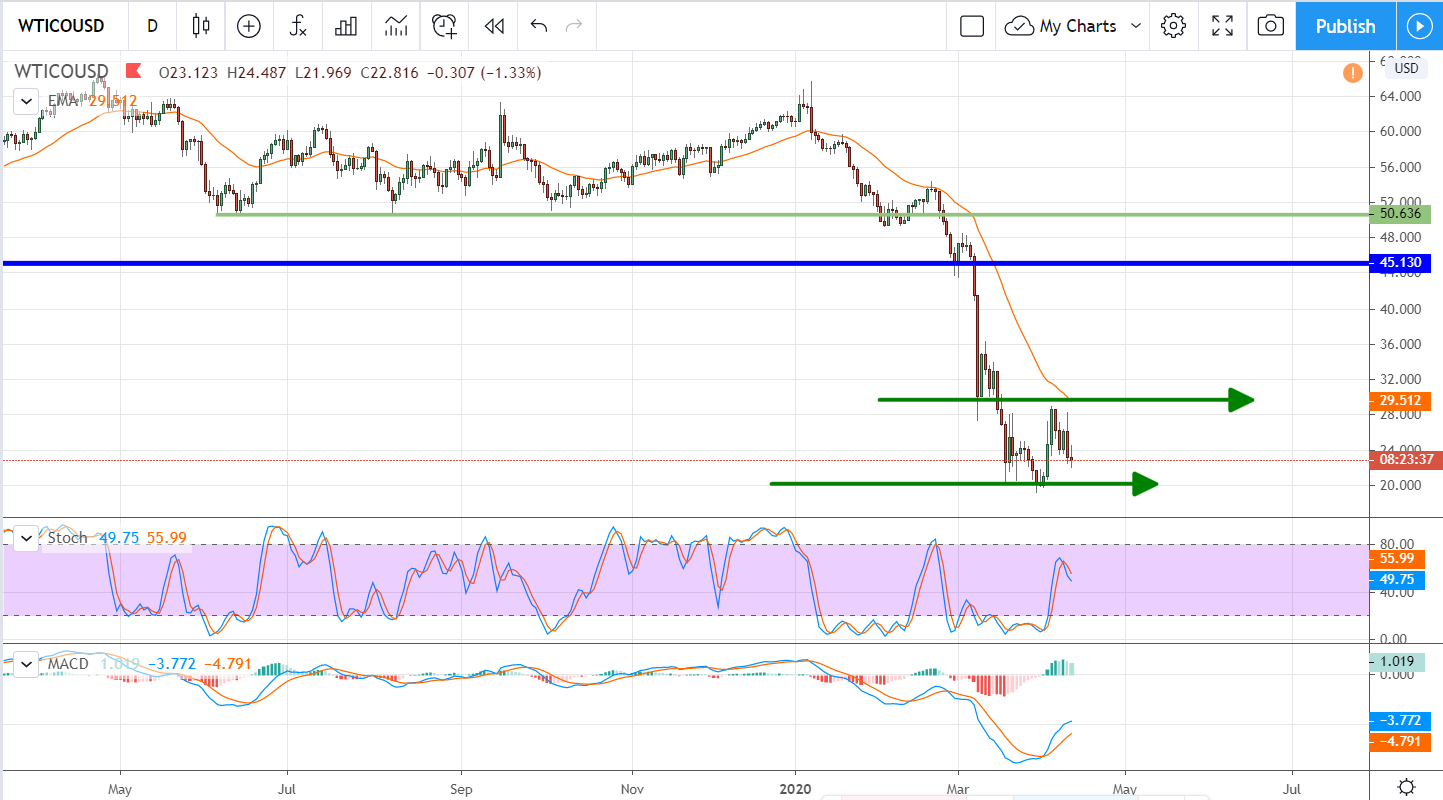Oil Price Outlook: Will WTI Bottom Now That OPEC+ Has A Deal?
WTI: A Bottom, Maybe, But Don’t Count On It
The Oil Price War has been a major drag on the broad market indices since it began. WTI and Brent were both down more than 50% from their pre-war highs at one point and threaten to undermine a key world industry. The price war helped send the broad market indices down to their lows as well, undermining the earnings outlook even as the coronavirus pandemic sent the market into a panic selling frenzy.
Now, OPEC+ has reached a deal. They’ve reached a deal to cut production by roughly 9.3 million barrels per day with a tapered decrease over the next year. The deal will keep production low until April of 2022 with the final step down to 5.8 million bpd beginning next January. The cut is worth about 10% of the global supply in its initial form and should help alleviate supply concerns.
The problem is the cuts don’t really alleviate supply concerns, but that may not matter. Global oil supply is at record highs due to the coronavirus slow-down and not expected to drop significantly even with the OPEC+ deal. The deal, while a boon to the market, may do little more than support prices at their current levels, levels that ultimately aid the cartel. With WTI trading well-below the generally accepted $45 break-even point for shale producers it is likely U.S. production will also flag and that my friends will help cut into global-oversupply issues.
Even so, the long-term outlook for oil is only mildly bullish. The coronavirus is certainly having an impact on travel and other energy needs and those changes are not going to reverse soon. When they do, the world’s population is sure to adopt new habits that will also impact the outlook for demand.
An Uncertain Technical Outlook
The technical outlook for WTI is uncertain. The black gold may be putting in a bottom but that bottom is far from confirmed. Based on the current trend, the down trend, I’d say the bias is still to the down side. Price action has made one bounce from a possible support level but that move was rejected soundly. Since then, the OPEC+ news has failed to inspire a surge in buying and that is worrisome. This means the market still sees a high supply-side imbalance, an imbalance that will weigh on prices for the near-term at least. I’d be loathe to enter a new position until price action either moves up or down past the targets at $29.50 and $20.
